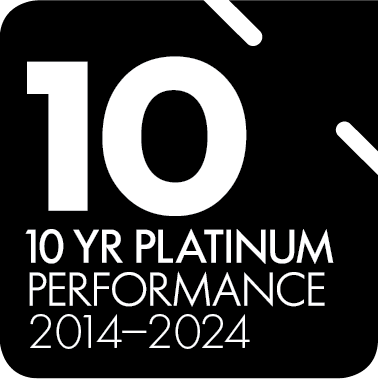Any rates and information listed are current at the date of writing (June 2025) and may change.
Pre-Retirement Pension
A Pre-Retirement Pension is available to clients who have reached the preservation age and are still working either full or part time.
A Pre-Retirement Pension differs from a Retirement Pension in that:
- Annual payments must be a minimum of 4%of the person’s account balance and no more than 10%, and
- Lump sum payments are not permitted.
Pre-Retirement Pension payments are tax free for over 60's.
Investment earnings in a Pre-Retirement Pension are generally taxed at 15%, but in most cases the actual tax paid is a lot lower when deductible expenses, franking credits, and other items are taken into consideration.
You can choose how much income you receive from your Pre-Retirement Pension at the start and change it at any time.
However, the total income you receive each year must be between a minimum of 4% and a maximum of 10% of your pension balance (also called ‘capital’).
Although Pre-Retirement Pensions allow you to select how your money is invested, they do not guarantee your money or the income level – these will vary with investment performance.
This depends on a number of factors including:
- the amount you originally invest,
- the amount of income you decide to receive each year,
- how your chosen investment options perform, and
- the amount of fees deducted.
No, Pre-Retirement Pensions are ‘non-commutable’ which means you cannot access the funds in the form of a lump sum (unless you have an unrestricted non-preserved component).
However, once you satisfy a condition of release, your Pre-retirement Pension will revert to a Retirement Pension which means you will have access to all your money, including lump sum payments (refer to our Retirement Pension factsheet for more information).
Upon your death, the entire balance in your pension will be paid out.
You can make a nomination that will determine how your beneficiaries receive the balance of your account, and in what proportion. The options that are available include:
- Nominating a reversionary beneficiary, such as a spouse, who will continue to receive pension payments after you die, or
- Making a binding death benefit nomination to the person(s) you want your benefit to be paid to.
Before your pension starts, you can nominate your spouse as a reversionary beneficiary. This means that if you die with money in your account, your spouse will continue to receive your pension, as long as he or she is your spouse at the time of your death. You cannot change your reversionary beneficiary once your pension starts.
If you do not wish to nominate a reversionary beneficiary (or the nominated reversionary beneficiary dies before you or ceases to be your spouse) you may make a binding death benefit nomination.
If you do not provide any details the death benefit will generally form part of your estate.
Please note that there may be tax implications depending on who the beneficiaries are.
If you have a Pre-Retirement Pension and satisfy a condition of release, your account can be transferred to a Retirement Pension where tax on investment earnings is 0% (nil), and there are no restrictions on lump sum withdrawals.
To satisfy a condition of release, you must:
- be permanently retired (i.e. working less than 10 hours per week) on or after your Preservation Age, or
- have ceased work with an employer (e.g. changed jobs) after age 60, or
- have reached age 65.
Retirement Pension
A Retirement Pension is an account-based superannuation pension offering tax concessions while providing you with the option to select how your funds are invested.
They generally suit investors seeking a tax effective income in retirement, flexibility in the level of income they want to have each year and access to capital throughout their retirement.
To start a Retirement Pension, you must:
- be permanently retired on or after your Preservation Age, or
- have ceased work with an employer (e.g. changed jobs) after age 60, or
- have reached age 65.
For people aged 60 or older, payments received from a Retirement Pension are tax free.
For people under the age of 60, a portion of your payment may be subject to income tax, but it will be eligible for a 15% tax offset. You should contact your super fund or financial planner to find out what portion of your Retirement Pension is subject to income tax.
All investment earnings in a Retirement Pension are exempt from income tax.
The maximum amount you can transfer into a Retirement Pension is $2.0 million. If you have more than this in superannuation, you can only transfer $2.0 million to a Retirement Pension and the balance can remain in your super account.
Amounts exceeding the $2.0 million cap do not have to be withdrawn from super. By keeping the excess in super, the earnings are generally taxed at 15% but in most cases the actual tax paid is a lot lower when deductible expenses, franking credits, and other items are taken into consideration.
On 28 February 2023, the Australian Government announced from 1 July 2025 a 30% concessional tax rate will be applied to future earnings for superannuation balances above $3 million. This tax rate will only be applied for the balance in excess of $3 million. This measure is not yet law.
You can choose how much income you receive from your Retirement Pension at commencement and in each subsequent financial year. You can change the amount of income you want at any stage during the year – the only obligation is that the total income you receive each financial year must meet the following minimum payment standards as set by the Government.
The table below shows the minimum annual payment (a percentage of your pension money - also called ‘capital’) you are required to draw per year.
Age | Minimum Annual Payment From 1 July 2023 |
Under 65 | 4% |
65 – 74 | 5% |
75 – 79 | 6% |
80 – 84 | 7% |
85 – 89 | 9% |
90 – 94 | 11% |
95 & over | 14% |
There are no maximum income limits applied to Retirement Pensions. However, if you are under age 60, there may be income tax implications depending on the amount of income you take.
Although Retirement Pensions allow you to select how your money is invested, they do not guarantee your money or the income level – these will vary with investment performance.
This depends on a number of factors including:
- the amount you originally invest,
- the amount of income you decide to receive each year,
- the amount of any withdrawals you make,
- how your chosen investment options perform, and
- the amount of fees deducted.
Yes, you can withdraw funds from your pension at any time. All withdrawals from Retirement Pensions by persons over the age of 60 are tax free.
If you are under the age of 60, there may be some tax consequences and you should check with your super fund or financial planner about these.
Upon your death, the entire balance in your pension will be paid out.
You can make a nomination that will determine how your beneficiaries receive the balance of your account, and in what proportion. The options that are available include:
- Nominating a reversionary beneficiary, such as a spouse, who will continue to receive pension payments after you die, or
- Making a binding death benefit nomination to the person(s) you want your benefit to be paid to.
Before your pension starts, you can nominate your spouse as a reversionary beneficiary. This means that if you die with money in your account, your spouse will continue to receive your pension, as long as he or she is your spouse at the time of your death.
If you do not wish to nominate a reversionary beneficiary (or the nominated reversionary beneficiary dies before you or ceases to be your spouse) you may make a binding death benefit nomination.
If you do not provide any details the death benefit will generally form part of your estate.
Please note that there may be tax implications depending on who the beneficiaries are.
If you receive any benefits from Centrelink, the capital value of your pension is counted as an asset. How your Retirement Pension is assessed under Centrelink’s income test can be based on a number of factors including when you commenced your Retirement Pension.
A financial planner or Centrelink officer can help you determine how much income is counted.
Togethr Financial Planning Pty Ltd (ABN 84 124 491 078, AFSL 455010) trading as Equip Financial Planning and Catholic Super is a subsidiary of Togethr Holdings Pty Ltd (ABN 11 604 515 791). It is a related entity to Togethr Trustees Pty Ltd (ABN 64 006 964 049, AFSL 246383), the trustee of the Equipsuper Superannuation Fund (ABN 33 813 823 017) whose divisions include Catholic Super.
This information is general information only. It has been prepared without taking into account your personal investment objectives, financial situation or needs. It is not intended to be, and should not be construed in any way as, investment, legal or financial advice.









